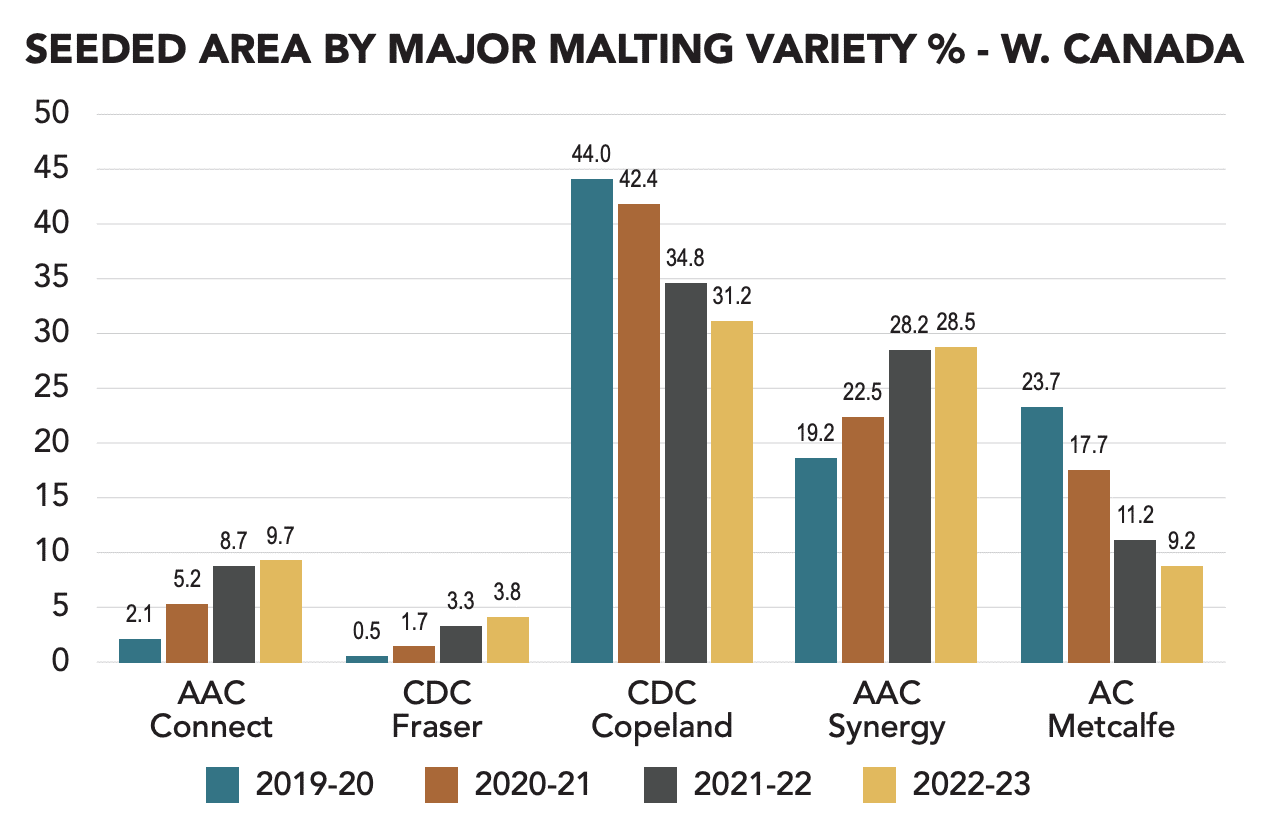The way in which the Canadian Malting Barley Technical Centre (CMBTC) classifies demand for barley varieties recently changed in 2023, prompting fears of declining demand for AAC Synergy, according to FP Genetics CEO Chris Churko.
But Churko says dealers and farmers can rest assured that demand for AAC Synergy remains strong and will continue to be for the foreseeable future.
“We’ve had questions from dealers and their farmer customers asking if they should stop growing AAC Synergy in favour of something else,” Churko says. “We can assure our partners and customers in the market that growing AAC Synergy is wise move, and FP Genetics will continue to monitor demand and inform our valued customers of any significant demand changes as time goes on.”
Concerns about a drop in demand among end users for AAC Synergy recently popped up when the CMBTC released its Recommended Malting Barley Varieties List for 2023-24. In the document, AAC Synergy is listed in the CMBTC’s Declining Demand category.
Peter Watts, managing director for the CMBTC, explains that the CMBTC recently eliminated its Established Demand category, which has traditionally been included on their annual Recommended Malting Barley Varieties list.
The Established Demand category was applied to varieties that have been on the market for a while and enjoy a devoted following among maltsters and end use customers. With this category now eliminated, varieties are classified as having Growing, Stable or Declining Demand.
“AAC Synergy has been on the market for a decade now. While it remains one of the Top 2 malting barley varieties in Canada, we are seeing signals from the market that end use customers are increasingly adopting newer varieties,” Watts says. “Demand for AAC Synergy continues to be strong. That said, no variety lasts forever, and we are hearing from some end-use customers that they are planning reduce the inclusion of older varieties including AAC Synergy in their purchases.”
In terms of seed acres for 2022, AAC Synergy clocked in at No. 2 with 28.5% of area seeded in Western Canada, according to stats from the Canadian Grain Commission. That’s just behind CDC Copeland which had 31.2% of all seeded acres. According to the numbers, seeded acres of Synergy grew slightly in 2022 compared to the year prior, while Copeland dropped by 3.6%.
Watts says it’s possible AAC Synergy could overtake CDC Copeland in terms of seeded acres in 2023, making it the top malting barley variety in Western Canada.
Peter Entz, vice-president of Seeds and Traits for Richardson Pioneer, notes that AAC Synergy is having another strong sales year at Richardson Pioneer as it’s a variety that farmers like to grow for multiple reasons.
But, Entz adds: “There is currently international demand for AAC Synergy, but of course it’s difficult to determine how sustainable that will be with the emergence of new varieties that have strong end use interest.”
Those varieties include AAC Connect (which captured 9.7% of seed acres in Western Canada in 2022 according to the CGC numbers) and CDC Fraser, which clocked in at 3.8% last year.
Churko adds that FP Genetics will continue to monitor market demand and inform customers of any major demand shifts, but for the time being says growing AAC Synergy remains a smart option for malting barley growers in Western Canada.
The CMBTC recently released its malt barley varieties list for 2024/25.













